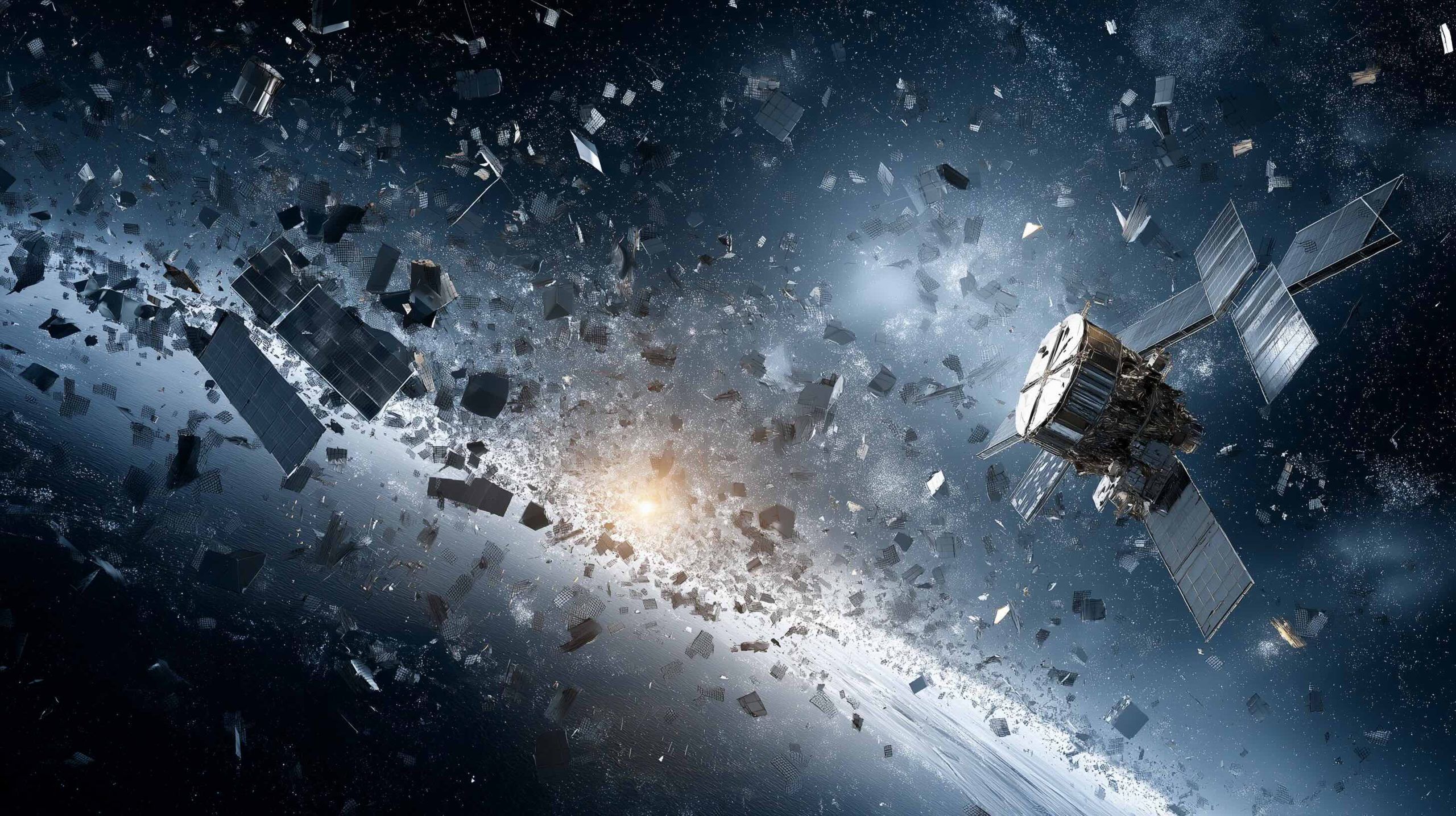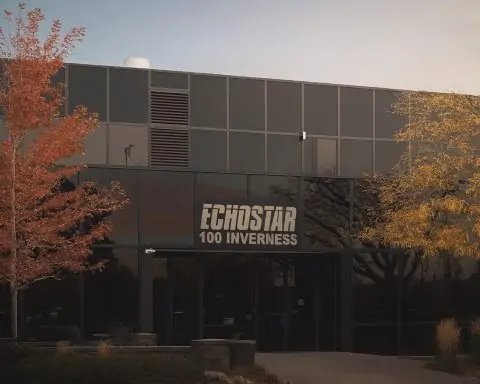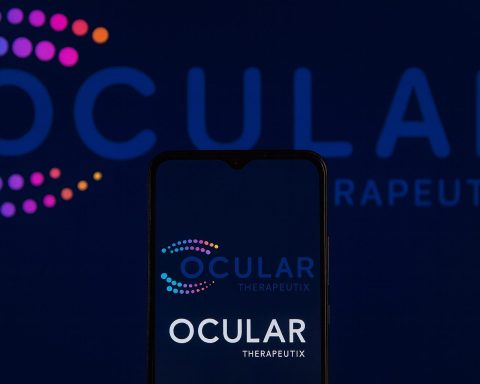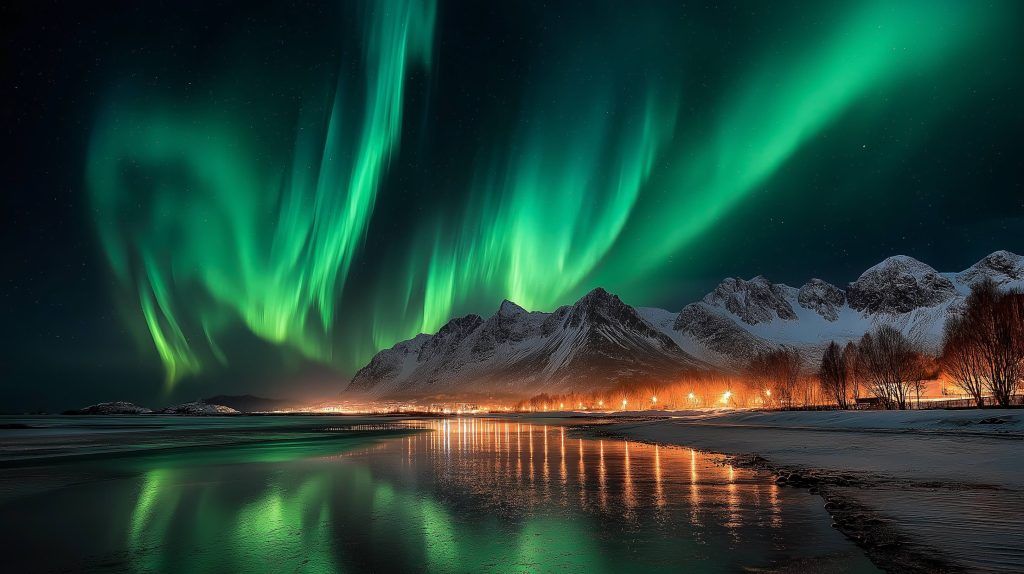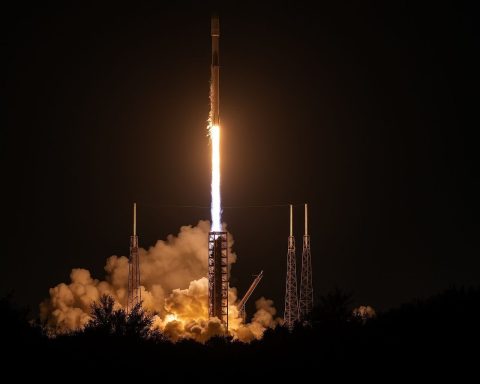- The EU Space Act was presented on 25 June 2025 and would impose EU-wide rules on launch licensing, debris-mitigation, end-of-life disposal, cybersecurity and environmental impact, with fines up to 2% of global turnover.
- If approved, most provisions would apply from 2030, including special traffic-coordination duties for mega (100+) and giga (1,000+) constellations.
- The debris crisis features about 40,000 tracked objects orbiting Earth and more than 1.2 million pieces larger than 1 cm, with at least 3,000 new debris fragments created in 2024.
- Starlink has launched 7,578 satellites, of which 7,556 were operational as of 30 May 2025.
- SpaceX logged over 50,000 collision-avoidance maneuvers for Starlink in six months, averaging about 275 dodges per day.
- In the busiest orbital bands, debris density is now on the order of the density of active satellites, raising the risk of a Kessler syndrome.
- Each 250-kg satellite re-entry releases around 30 kg of aluminium-oxide nanoparticles, with 2022 re-entries emitting 17 t of alumina and megaconstellations potentially reaching 360 t per year.
- NOAA-CIRES modelling projects that alumina from re-entry could heat the mesosphere by 1.5°C and slow polar vortex winds by 10% by 2040.
- A Guardian summary warns that heating from re-entry aerosols may delay ozone-hole recovery under the Montreal Protocol, a point emphasized by Dr Chris Maloney.
- Europe’s debris-removal effort includes ClearSpace-1, a 112-kg Vega adapter capture and drag-to-burn-up planned for 2025 at a cost of €86 million.
The European Commission’s freshly‑minted EU Space Act lands at the very moment low‑Earth orbit (LEO) is sliding from boomtown to bottleneck. Behind the headline pledge to fine careless satellite operators lurks a hard truth: more than 40 000 tracked objects, 7 500+ Starlink spacecraft alone, and upward of 120 million un‑tracked fragments already threaten satellites, science and Earth’s atmosphere. This report unpacks what the Act would change, why megaconstellations are the flash‑point, and how experts warn that burning satellites could stall ozone recovery just as surely as a Kessler‑style collision chain.
1. Why Brussels Is Moving Now
The Space Act, presented on 25 June 2025, would for the first time impose EU‑wide rules on launch licensing, debris‑mitigation, end‑of‑life disposal, cybersecurity and environmental impact. Operators that flout them face fines of up to 2 % of global turnover. [1]
Commission officials say today’s patchwork of national laws “holds back innovation” and “makes space look like a jungle.” [2] The proposal’s three pillars—safety, resilience and sustainability—are laid out in the Commission’s own explainer. [3] If Parliament and Council sign off, most provisions would apply from 2030, including special traffic‑coordination duties for “mega” (100+) and “giga” (1 000+) constellations. [4]
1.1 Political pressure
French MEP Christophe Grudler summed up the mood: “Setting traffic rules for satellites might not sound as sexy as Mars, but it has an impact on our daily lives.” [5] EU Space Commissioner Andrius Kubilius calls the 21st century “the century of space… we are at the start of a space revolution.” [6]
2. The Scale of the Debris Crisis
- ~40 000 tracked objects now circle Earth; more than 1.2 million pieces larger than 1 cm are estimated. [7]
- In 2024 alone at least 3 000 new debris fragments were created by break‑ups. [8]
- Starlink has already lofted 7 578 satellites, 7 556 of them operational as of 30 May 2025. [9]
The European Space Agency’s 2025 Environment Report warns that in the busiest altitude bands the density of debris is now “the same order of magnitude” as active satellites—textbook conditions for Kessler syndrome. [10]
2.1 Collision alerts are exploding
SpaceX’s latest FCC filing shows 50 000+ collision‑avoidance maneuvers by Starlink craft in just six months—about 275 dodges every day. [11] Space‑safety researcher Dr Hugh Lewis cautions that each burn “shortens operational life and uses precious propellant.” [12] Reuters notes that UN panels now push for a globally shared traffic‑management database to curb mounting risks. [13]
3. Starlink and the Megaconstellation Paradox
SpaceX touts Starlink as a lifeline for connectivity‑starved regions, yet astronomers, insurers and regulators view the fleet as debris‑risk multiplier #1:
| Concern | Evidence | Source |
|---|---|---|
| Optical / radio interference | Satellite ‘trains’ brighten the night sky and swamp radio bands | [14] |
| Close‑approach burden | 50 000 maneuvers in six months | [15] |
| Failure to deorbit | Even with aggressive prop‑use, a handful fail each year | [16] |
Lewis warns that without caps, “collisions will soon become a regular part of the business.” [17]
4. The Hidden Environmental Cost: Burning Satellites and the Ozone Layer
Until recently debris debates stopped at orbital risk; new research shows re‑entry pollution could be just as serious:
- Each 250‑kg satellite releases ≈30 kg of aluminium‑oxide nanoparticles on re‑entry. [18]
- Satellites re‑entering in 2022 alone emitted 17 t of alumina; full megaconstellations could push this to 360 t yr‑¹, a 646 % jump over natural levels. [19]
- NOAA‑CIRES modelling finds that by 2040 alumina could heat the mesosphere by 1.5 °C and slow polar vortex winds by 10 %. [20]
- A recent Guardian summary warns such heating may delay ozone‑hole recovery targeted under the Montreal Protocol. [21]
Lead author Dr Chris Maloney stresses the stakes: “Even from a crude perspective, re‑entry aerosols can influence stratospheric processes.” [22] Astronautics researcher Dr Joseph Wang calls the pollution “an unplanned consequence of planned obsolescence.” [23]
5. Europe’s Technical Counter‑Offensive
5.1 ClearSpace‑1: the first debris‑towing ‘tow‑truck’
ESA has contracted Swiss start‑up ClearSpace to capture a 112‑kg Vega adapter and drag it to burn‑up in 2025, a €86 million proof‑of‑concept for commercial debris removal. [24]
5.2 Zero Debris Approach
ESA’s updated mitigation policy (November 2023) and a community‑driven Zero Debris Technical Booklet aim for no new ESA junk by 2030 and five‑year post‑mission disposal—well beyond the long‑standing 25‑year rule. [25] [26] Director‑General Josef Aschbacher puts it plainly: “Preventing new debris is no longer enough; we must actively clean up.” [27]
6. Regulatory Gaps and the Road Ahead
The EU Act covers operators selling services in Europe, yet U.S., Chinese and private launchers still follow disparate national rules. Without an enforceable global treaty:
- Operators set their own collision thresholds (Starlink uses 1‑in‑1 000 000 vs. NASA’s typical 1‑in‑10 000). [28]
- Data‑sharing remains voluntary, complicating cross‑fleet de‑confliction. [29]
- The 1967 Outer Space Treaty predates commercial constellations and has no enforcement teeth for debris. [30]
UN discussions on a space‑traffic‑management accord have stalled amid geopolitical tensions. Experts argue that Brussels’ fines could become the de‑facto global standard if backed by market access to Europe’s €560 billion space economy. [31]
7. Expert Sound‑Off
| Expert | Affiliation | Key Quote |
|---|---|---|
| Christophe Grudler (MEP) | European Parliament | “It’s starting to look like a jungle up there. We need to intervene.” [32] |
| Dr Hugh Lewis | Univ. of Southampton | “The more maneuvers Starlink makes, the faster it eats fuel—and the risk never hits zero.” [33] |
| Dr Chris Maloney | NOAA / CIRES | “Re‑entry aerosols could rival meteor dust by 2040—this is climate‑relevant.” [34] |
| Dr Joseph Wang | USC | “Megaconstellations introduce a pollutant pathway no one planned for.” [35] |
| Josef Aschbacher | ESA DG | “Active clean‑up is now obligatory if we want to keep space usable.” [36] |
8. What Happens Next?
- Late 2025: European Parliament and Council debates; industry lobbying intensifies.
- 2026–2027: ESA demo missions (ClearSpace‑1, ADRIOS tech tests) verify capture tech. [37]
- 2030: First compliance audits under the Space Act; five‑year deorbit rule fully applied to ESA missions. [38]
- 2040: NOAA models test whether alumina accumulation matches worst‑case trajectories. [39]
9. Bottom Line
Orbital debris is no longer a niche engineering nuisance—it is a three‑dimensional environmental, economic and geopolitical hazard. The EU Space Act sets the most ambitious sustainability bar yet, but without global buy‑in its impact will be limited. For now, the message from Brussels is clear: polluters will pay—whether in the form of fines in Luxembourg, or in lost satellites, broken science and an atmosphere laced with metal dust.
References
1. www.reuters.com, 2. www.politico.eu, 3. commission.europa.eu, 4. www.politico.eu, 5. www.politico.eu, 6. www.reuters.com, 7. www.esa.int, 8. www.esa.int, 9. www.space.com, 10. www.esa.int, 11. www.space.com, 12. www.space.com, 13. www.reuters.com, 14. www.space.com, 15. www.space.com, 16. www.space.com, 17. orbitaltoday.com, 18. news.agu.org, 19. news.agu.org, 20. csl.noaa.gov, 21. www.theguardian.com, 22. csl.noaa.gov, 23. news.agu.org, 24. www.esa.int, 25. esoc.esa.int, 26. www.esa.int, 27. x.com, 28. orbitaltoday.com, 29. www.reuters.com, 30. www.theguardian.com, 31. www.reuters.com, 32. www.politico.eu, 33. www.space.com, 34. csl.noaa.gov, 35. news.agu.org, 36. x.com, 37. www.esa.int, 38. esoc.esa.int, 39. csl.noaa.gov
